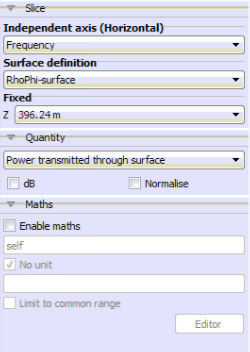I have the following EDITFEKO code:
** Near field: NearField1
DA: 0 : 0 : : : 0 : : : 0 : : : 0
OF: 1 : 0 : : : : 0 : 0 : 0 : 0 : 0 : 0
FE: 3 : 5 : 5 : 5 : 1 : 0 : 0 : 0 : 125 : 90 : 325 ** NearField1
I displayed the information generated in cartesian coordinates (POSTFEKO) and it gave me 'Power Transmitted through surface' on a specific 'Surface Definition' and 'phi' angle and obtain a wattage that could not possibly represent a specific point. Does this mean that this is the total power that is part of an infinite surface? If I select RhoPhi surface and a specific height, is that surface infinite?
Is there a way in which I can get the specific power in a point at a specific height? Or does this depend on the antenna used for reception? I see that I can get the Electric Field values at a specific point but not power.
Thanks in advance
<?xml version="1.0" encoding="UTF-8"?>